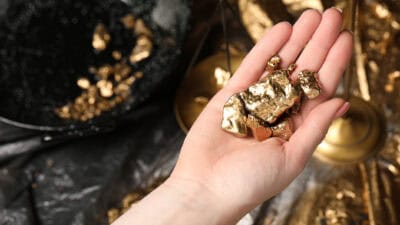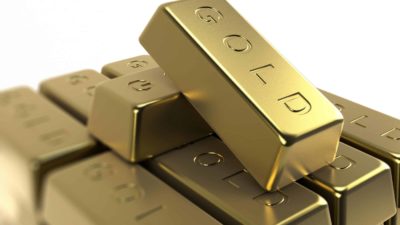Gold as an investment asset has long had a complicated relationship in many investor's portfolios. Viewed as a 'hedge' against both inflation and stocks (gold tends to have an inverse relationship with the stock and property markets), the yellow metal can be a useful way to protect against volatility. Hedge-fund king Ray Dalio has said that those who shun gold "know neither history nor economics", so in my opinion, it is definitely something to at least consider.
Gold has many angles of exposure that a prospective investor can explore. Aside from buying the physical bullion (which many find off-putting due to the cost of buying and storing the metal), one can invest in gold miners like Newcrest Mining Limited (ASX: NCM) for leveraged exposure to the gold price. This is a riskier approach but when you buy a share in a mining company like Newcrest, remember you are buying a stake in the mines owned by the company and all the gold they store.
The easiest way for the average investor to gain exposure to the yellow metal is through Exchange Traded Funds (or ETFs). A gold ETF represents a share in a store of physical bullion, often held in a bank vault or other secure location. If the gold price appreciates, your share in the ETF should also appreciate as the holding becomes more expensive.
There are two major options for Australian investors who want to pursue this avenue on the ASX. The ETFS Physical Gold ETF (ASX: GOLD) is the largest gold ETF traded in Australia and represents 358,600 ounces of physical gold held in the London bank vaults of HSBC bank. It charges a management fee of 0.40% annually for storage and other costs.
Like many international commodities, gold is universally traded in US dollars, which means that for Australians, the price we can buy gold at is affected by the gold spot price as well as the price of our dollar relative to the greenback (we have to buy US dollars in order to buy gold). This adds a layer of complexity and volatility that our American friends don't have to experience.
The BetaShares Gold Bullion ETF – Currency Hedged (ASX: QAU) is another option for those who would like to take the currency risks out of the equation. This ETF also stores physical gold in a London bank vault (owned by JPMorgan), but actively hedges against currency movements between the US and Aussie dollars to give a "purer exposure" to the gold price. This comes at a cost however, with QAU charging a higher fee of 0.59%.
Foolish Takeaway
If you are seeking exposure to gold through ETFs, then the choice between QAU and GOLD comes down to preference for currency hedging. If you are comfortable with AUD/USD fluctuations, then GOLD makes sense with its lower management fee. However, if you want to take this layer of uncertainty away, then QAU is also a good option. Just remember what Mr. Dalio says, I think it is good advice for every investor.








